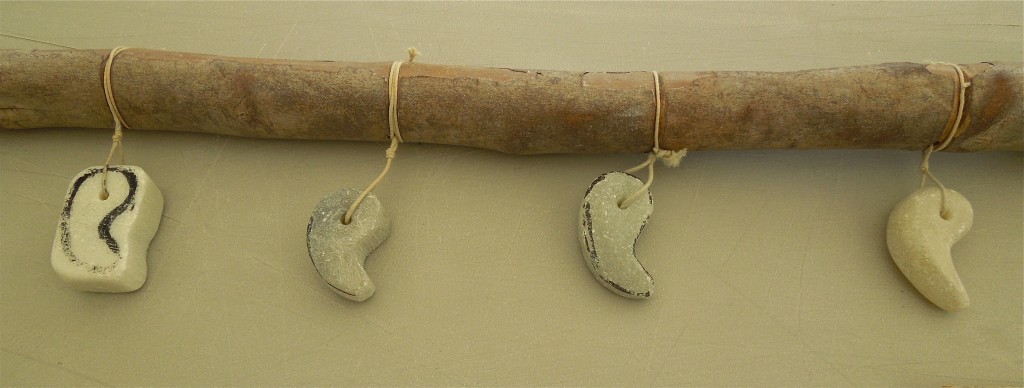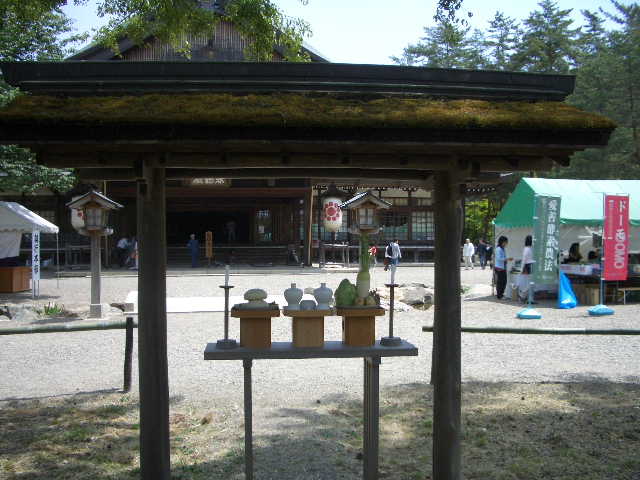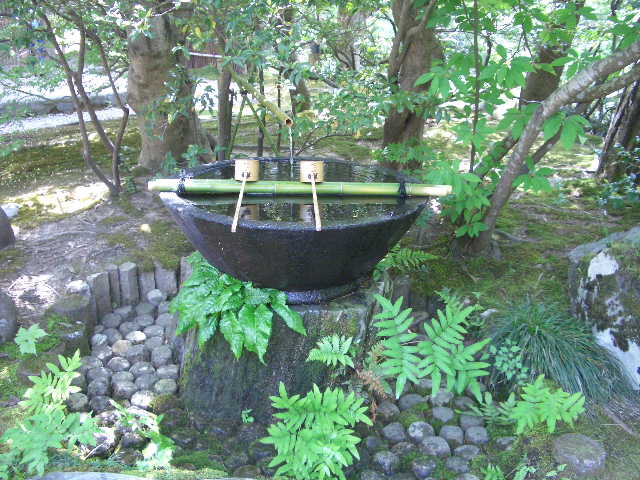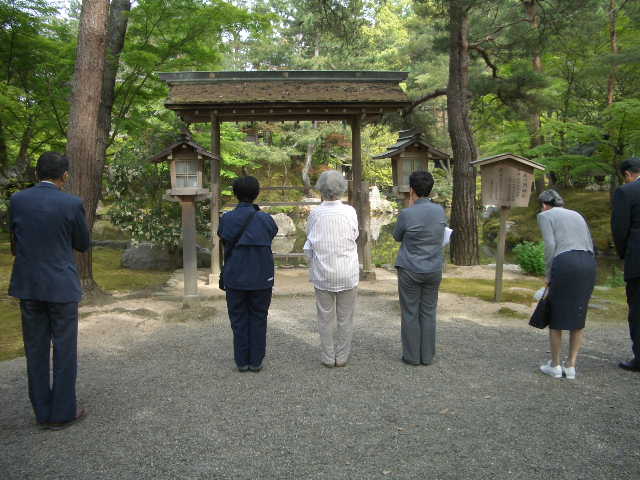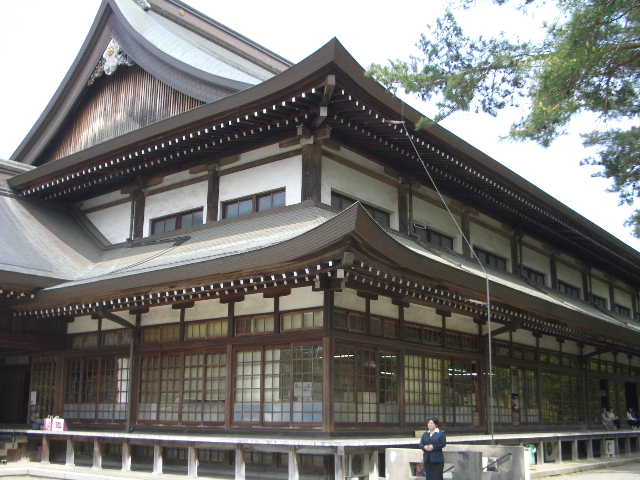
A shrine at Ayabe, Kyoto Prefecture, one of the two main bases of Oomoto along with that at Kameoka
The Oomoto sect is particularly open to foreigners, and has established overseas branches. The well-known Japanologist, Alex Kerr, was involved with them from 1977, helping run their art seminars. It’s also of interest for its inspirational role in the formation of aikido.
On their home page Oomoto describe themselves in the following way: “Oomoto teaches that many kami do exist, but they all come from the same Supreme God of the Universe, so in effect there is just one God. When Oomoto followers pray to a particular kami by name they understand this is just one manifestation of the single God. Even the name “Oomoto” emphasizes this point. It translates as “Great Source” or “Great Origin.”
But how did the sect begin? It originated in the late nineteenth century when the founder, an illiterate peasant woman called Nao Deguchi, had a series of visions, and in the passage below an account is given by a contemporary. The extract comes from a book called Kaiso-den, translated by Charles Rowe and Yasuko Matsudaira, and was published by the Oomoto Foundation in 1982. (Later Nao’s vision was taken up and developed by her son-in-law Onisaburo Deguchi, the main theorist of the sect.)
******************************************************
http://www.oomoto.or.jp/English/enKyos/kaisoden/index.html
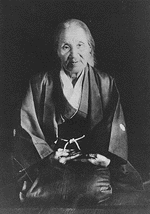
Nao Deguchi (1837-1919) (source unknown)
It all began on the night of the lunar new year of 1892. Nao, then fifty-five, had a mysterious dream in which she found herself in the midst of a series of palaces, many-tiered and beautiful beyond anything she could have imagined. Choosing what appeared to be the central palace, she entered through the main portal and beheld, sitting upright on a throne, a divine figure with noble aspect and a long beard. Nao, overwhelmed by the sublime appearance of this godlike personage, approached as if entranced. Raising his majestic form to its full height, the divine figure took Nao’s hand and led her deep into the palace where they came to a staircase leading up to a shrine. Ascending the steps alone, the divinity intoned some words of prayer and then led Nao back to the main hall.
Nao, still in trance, left the palace and turned to what she conceived to be the northeast. There, beyond a large gate, loomed a palace even more imposing than the first. Enthroned within was another divine figure, the sublimity of whose person and the brilliance of whose jewels made Nao tremble with awe.
This divinity rose slowly from his throne, and proceeding straight up to Nao, looked fixedly at her face. The inspection over, he resumed his throne without uttering a word. Nao, terrified, ran out of the palace and through the gate as fast as she could.
Outside, she beheld yet another magnificent palace, inside which she discovered her late husband, Masagorô. Forgetting all else, she ran to him, and as the two were excitedly talking over old times, Nao abruptly awoke from her dream.
The next night and the next Nao had similar dreams, and from about this time a mysterious spiritual aura seemed to settle around her.
The Beginning of the Foundress’ Spirit Possession
On February 3, 1892, Nao paid a visit to her daughter Yoneko in Nishimachi. Ryôko and Sumiko, then eleven and nine years old, remained at home. Lonely and cold, they huddled around a charcoal fire, and talking about their sister in Nishimachi, they soon grew drowsy and fell asleep. At about midnight, they awoke with a start to hear a loud voice shouting, “Sumiko! Ryôko! Open the door!”
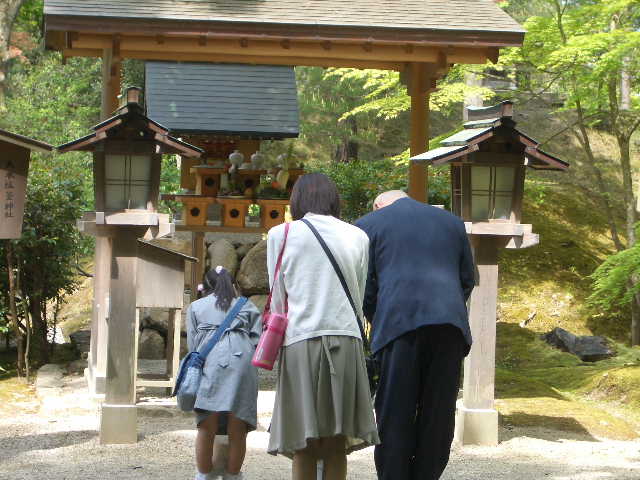
Family harmony in the beautiful surrounds of Ayabe
The voice was their mother’s, but never before had they heard her speak in such a loud and commanding tone. The two girls ran to open the door. The Nao who strode into the house, far from her usual gentle self, showed an imperious presence that would have quelled the devil himself.
“Go to your sister’s house at once,” she ordered, “and tell her to light thirty-six candles and chant the name of the holy sutra.”
The astonished girls ran barefoot out of the house clutching their wooden clogs in their hands. After running for a while, they paused to catch their breath and one of the girls said, “She really did say light thirty-six candles and recite the name of the holy sutra, didn’t she?”
“What would make her say a thing like that?” “You don’t think she’s gone off her head like Yoneko?” “What will we do if Mother goes crazy too?”
Arriving at the Ôtsuki household, they gave Ôtsuki and their sister Nao’s message. Ôtsuki muttered to himself, “It seems their mother has finally gone mad,” and to the girls, “All right, all right. Go home and tell your mother not to worry. Yoneko is lighting the candles and getting ready to chant the name of the sutra.”
The girls left Ôtsuki’s house and returned home, but their mother was nowhere to be found. Anxiously searching the house, the two girls found their mother’s kimono in one of the rooms. Hearing a noise outside by the well, they went to see, and there, in the freezing weather, was their mother bathing in buckets of icy water.* (* Pouring buckets of cold water over one’s person is standard practice for Japanese ascetics.)
When Nao returned to the house, the girls reported, “We’ve been to Nishimachi and said what you told us.” “Well done,” their mother replied. “You must be frozen. You’d better get into bed before you catch cold.” This time it was their mother’s usual calm, tender voice, and the girls went to sleep much relieved.
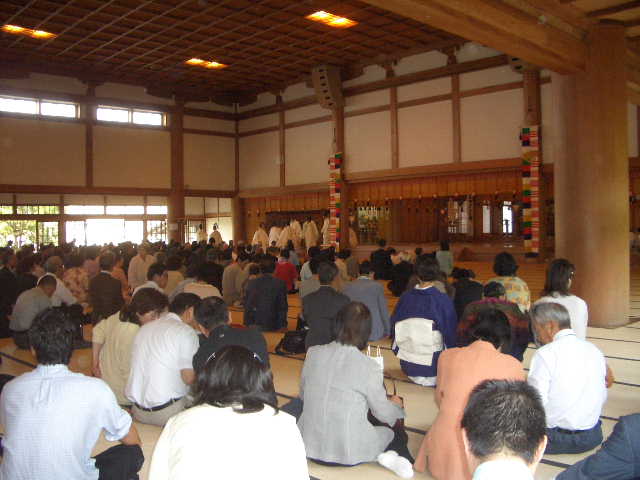
Full house at the Ayabe shrine for its annual festival
From this time on, Nao’s icy ablutions continued every evening, and an invisible spiritual presence entered and left her at intervals. This presence seemed to push up with great power from the pit of her stomach, and Nao would begin roaring in a great voice not her own. In her own quiet voice she would reply or ask questions and the spirit would roar in response. In this way Nao and the spirit possessing her carried on their strange dialogue, and it was thus that the Foundress’ possession began.
Nao was perfectly aware when the spirit entered her. First her body became extraordinarily heavy, and she felt a great force in her abdomen. At this time all feeling of fatigue left her and her posture became erect and rigid, like an effigy in stone. Presently her body began to rock backward and forward and she would raise and lower her feet alternately. At such times Nao’s chin would be drawn in, her eyes glittering, and with tremendous pressure from the pit of her stomach the voice would come forth in a solemn tone.
Nao, who did not care for all this bellowing in a loud masculine voice, would occasionally clench her teeth, determined not to speak. In vain. The great voice would burst forth even so, forcing her mouth to open.
Nao Questions the Spirit
When the Foundress first entered this state of spirit possession she was startled and alarmed by what was happening to her, and only wished to rid herself of the intruder. Since this proved to be impossible, she eventually settled down and began to question the entity as to who and what he was.
“Who are you?” “I am Ushitora no Konjin.” “Surely you are trying to deceive me.” “I am God. God does not lie.” “Are you really such a great god? How can I be sure you aren’t just a fox or a badger?”* “I am not a fox or a badger. I am the god who will reconstruct the world.” (* In Japan the fox and the badger are often supposed to be the manifestations of low spirits that delight in perplexing or tormenting mortals.)
After repeated questioning, Nao was forced to the conclusion that she was indeed possessed by some form of deity. She also came to understand that her lifelong sufferings had been predetermined as a trial, a cleansing of body and spirit in preparation for her use as a pillar for the divine plan, and she resigned herself to a life of complete obedience to the spirit’s urgings.
Before reaching this conclusion, however, true to her cautious nature, she worried a great deal that she might be leading mankind astray with these pronouncements of the “reconstruction of the greater world”. And so she consulted priest-mediums and occultists of various kinds to examine the spirit and pass judgement on its authenticity.
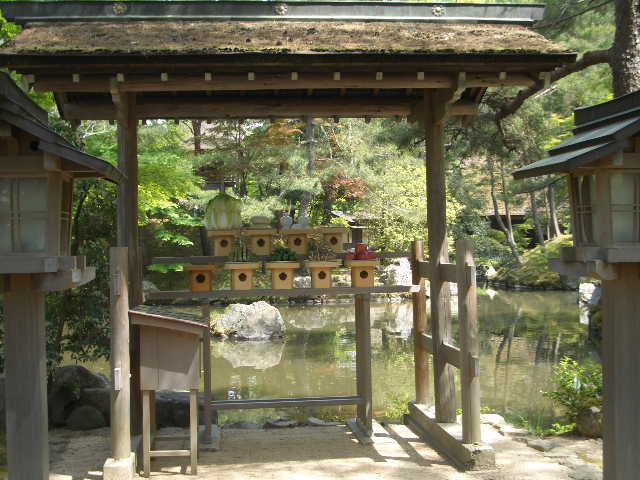
Oomoto rituals are characterised by their aesthetic appeal and belief in the spiritual nature of beauty
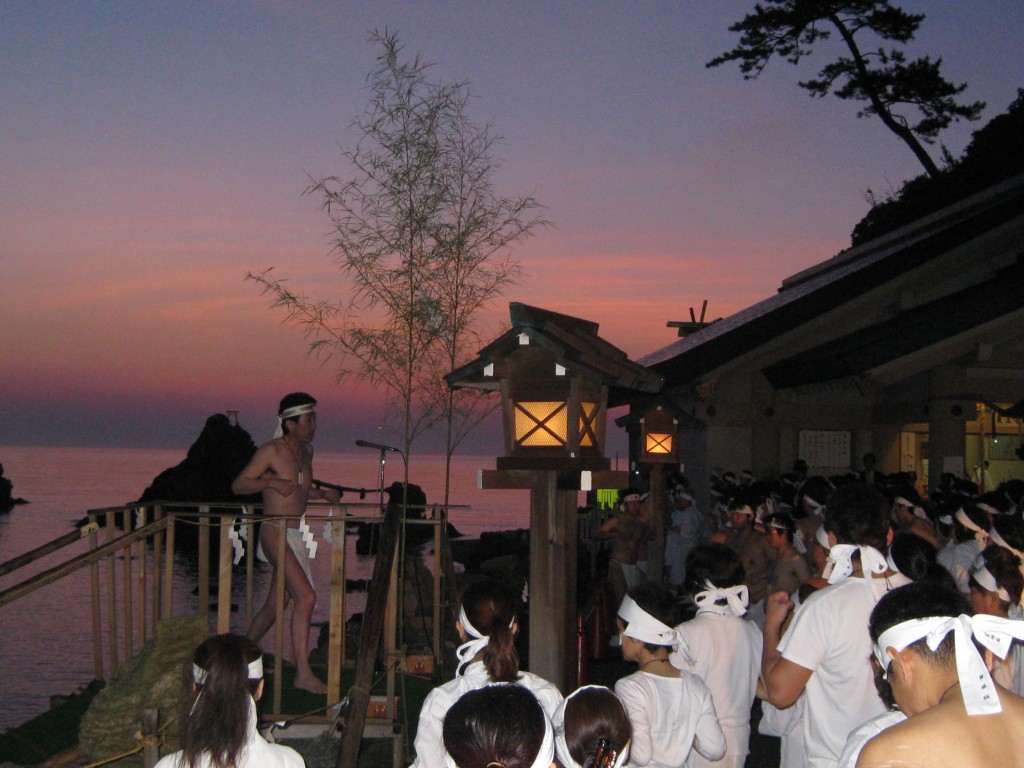
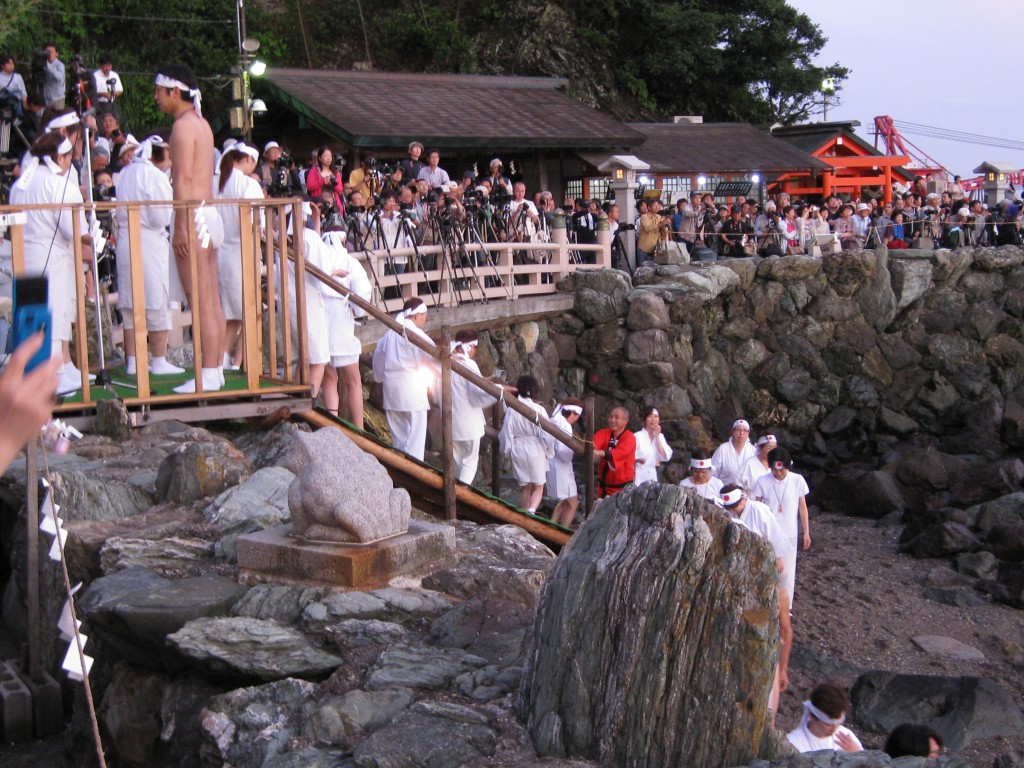
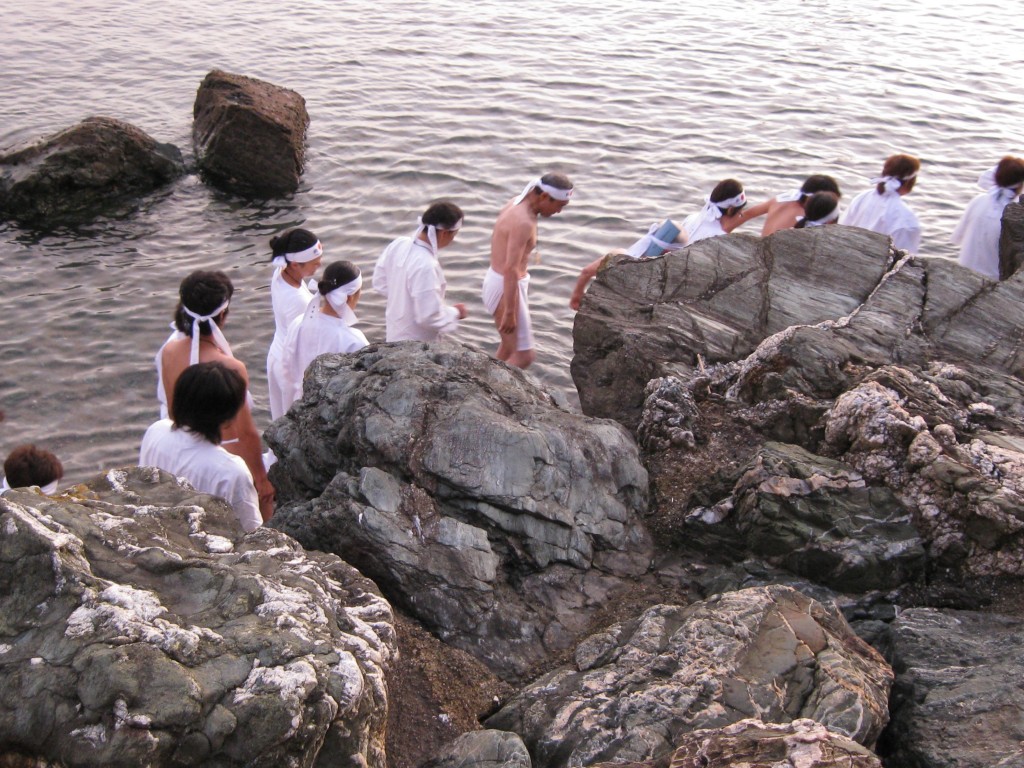
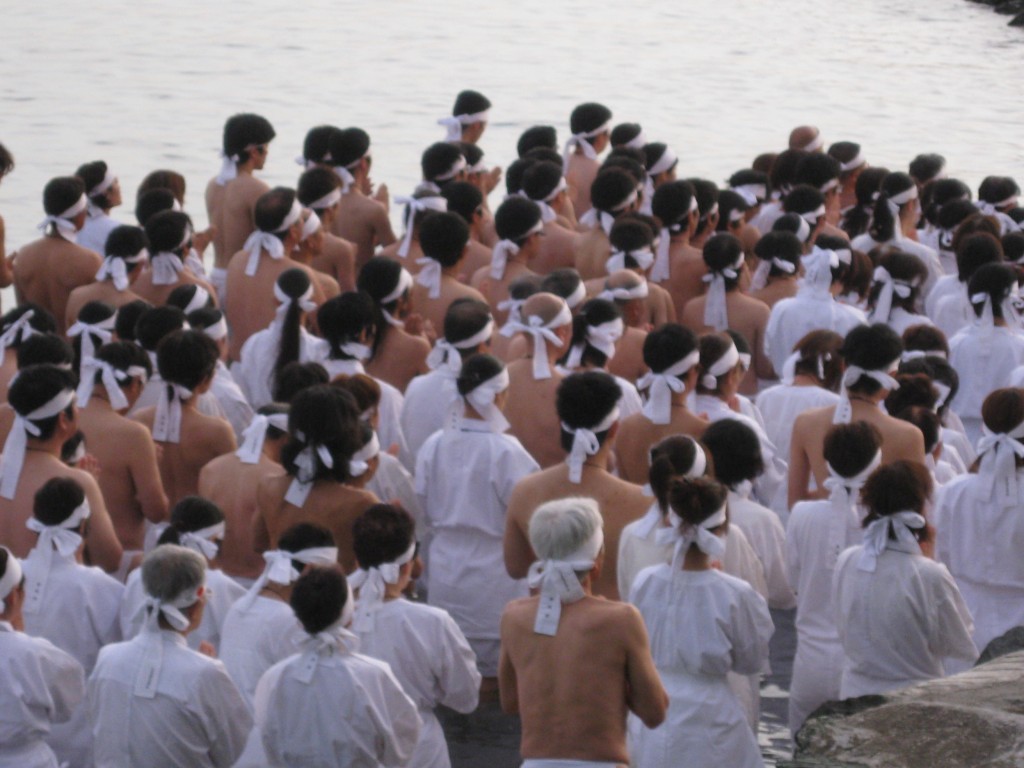
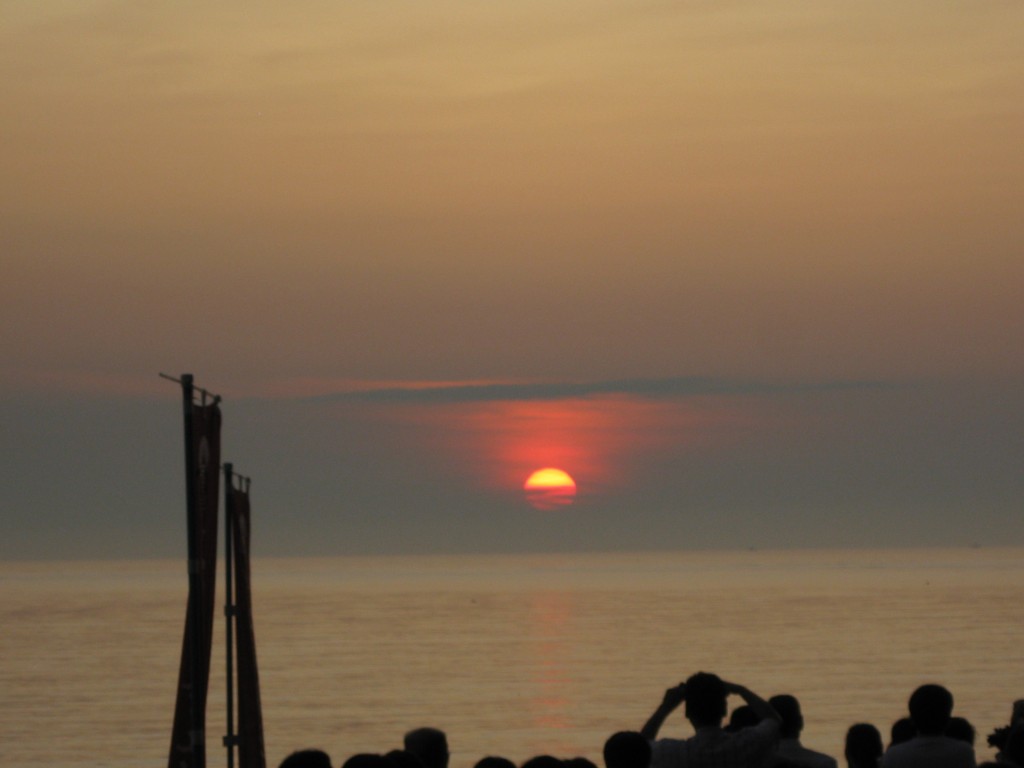
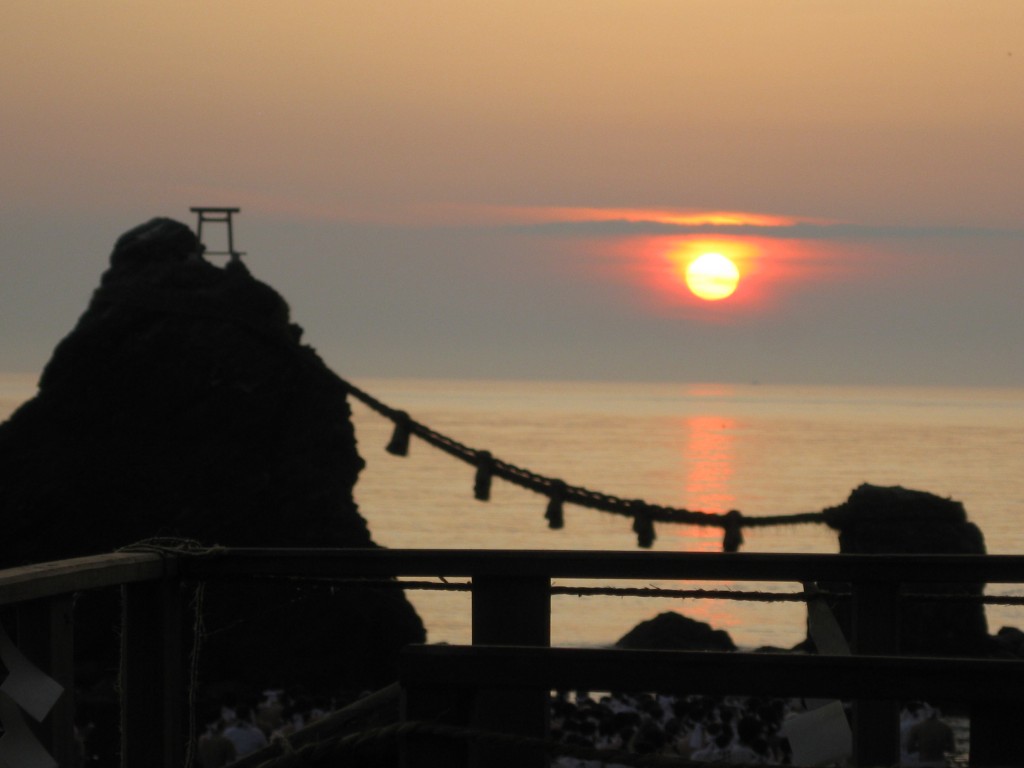
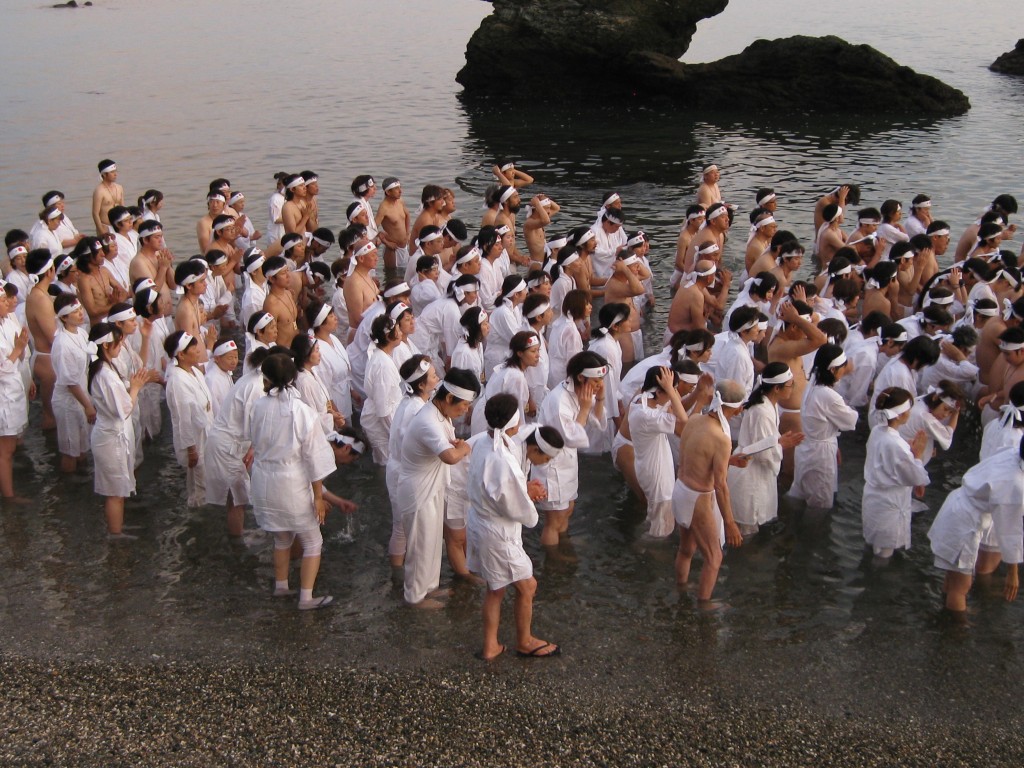
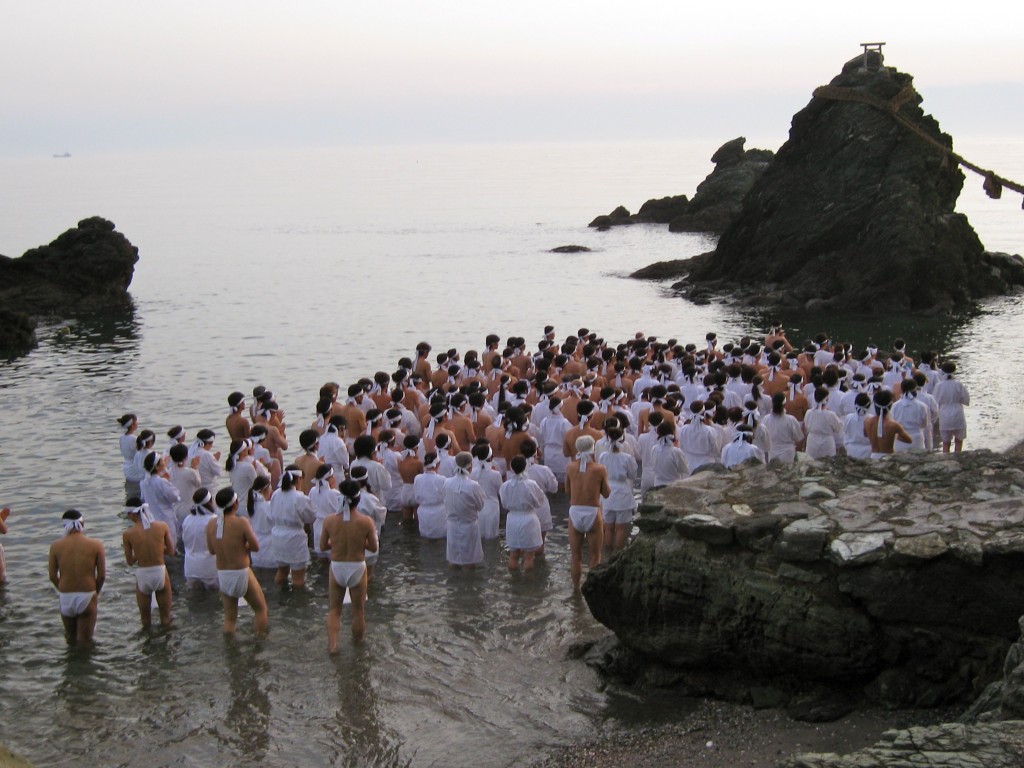
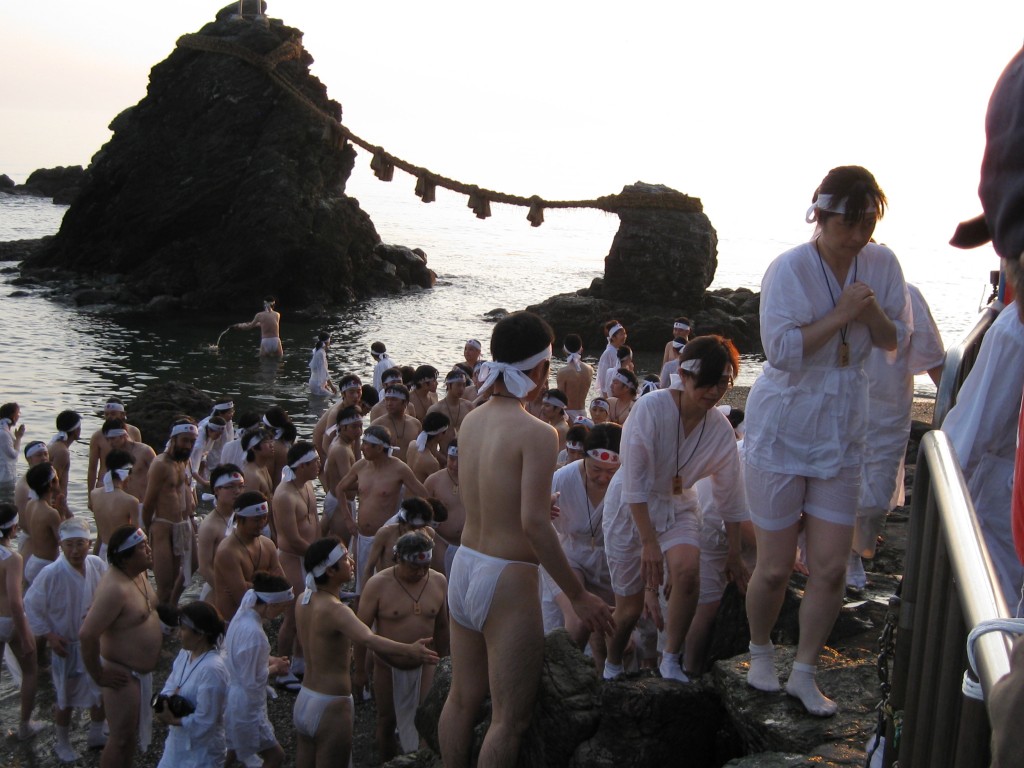

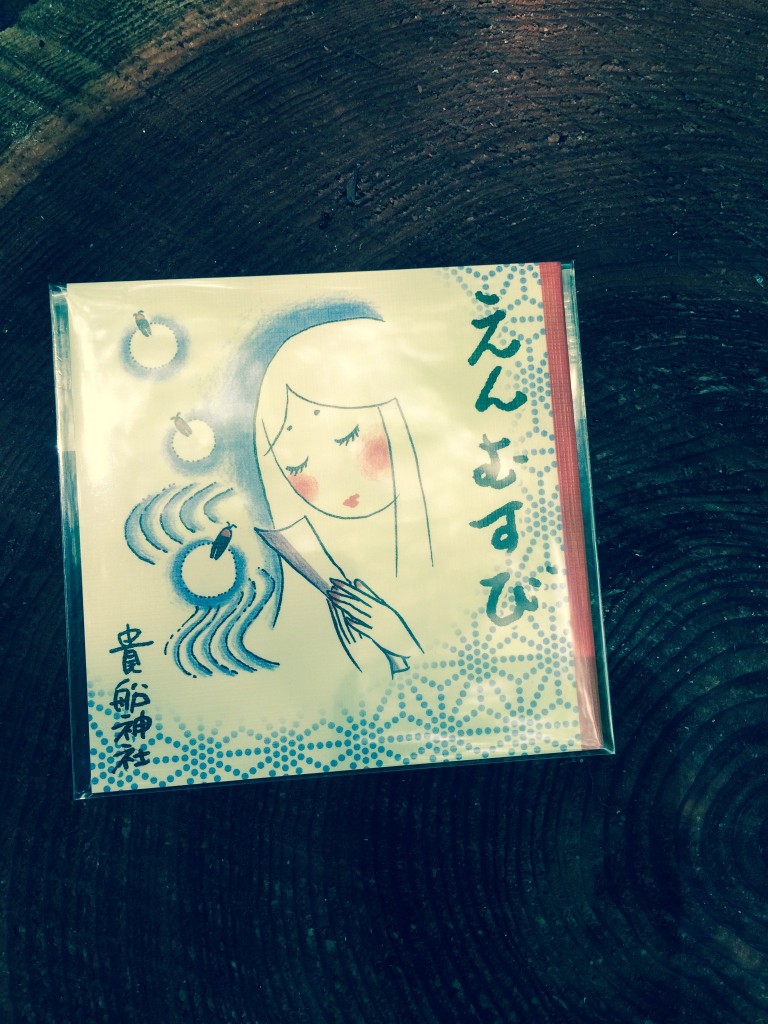

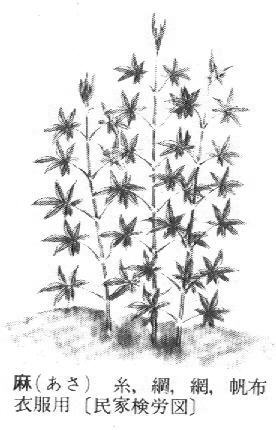
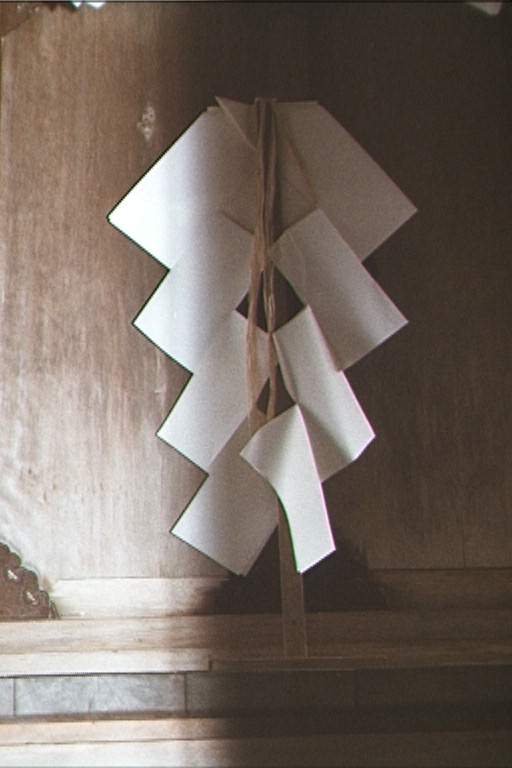
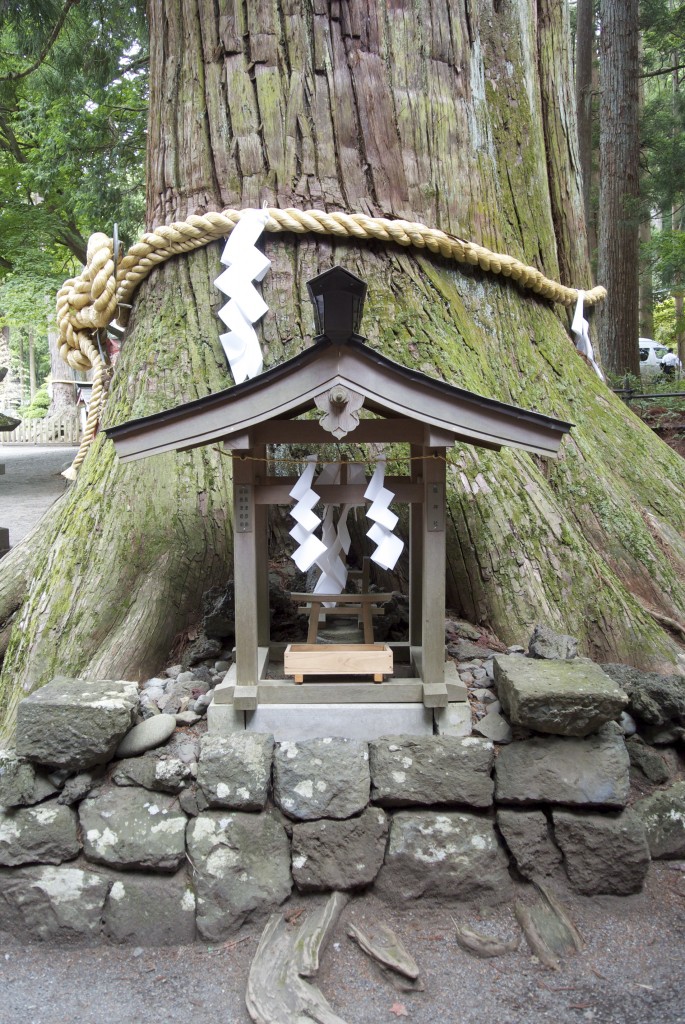

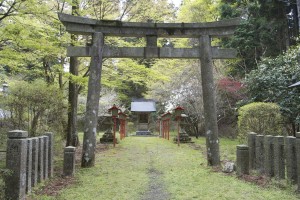
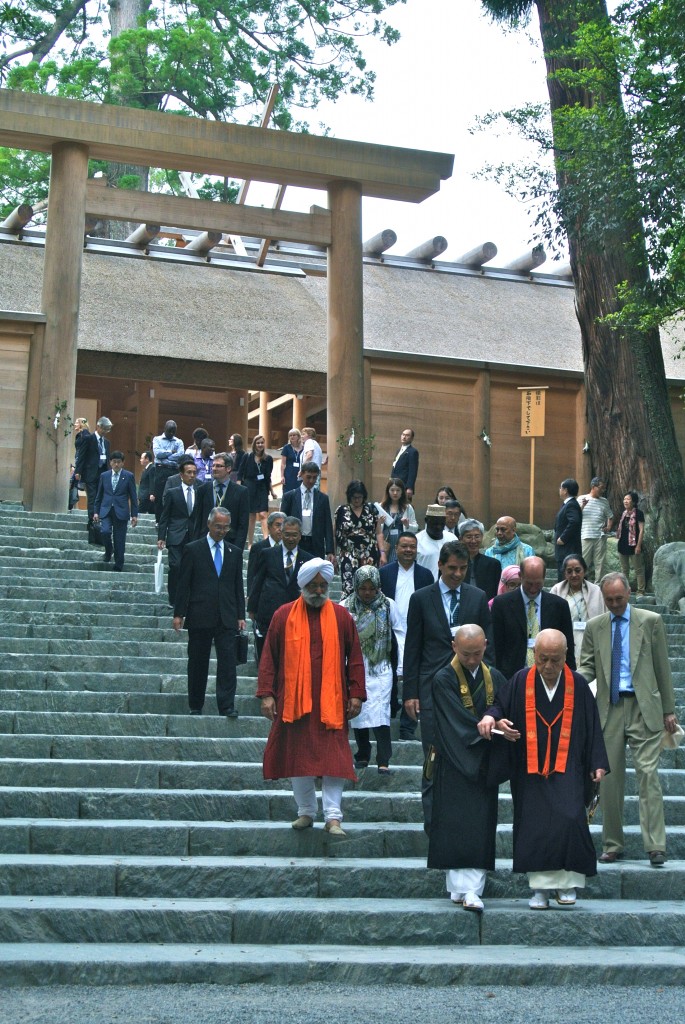

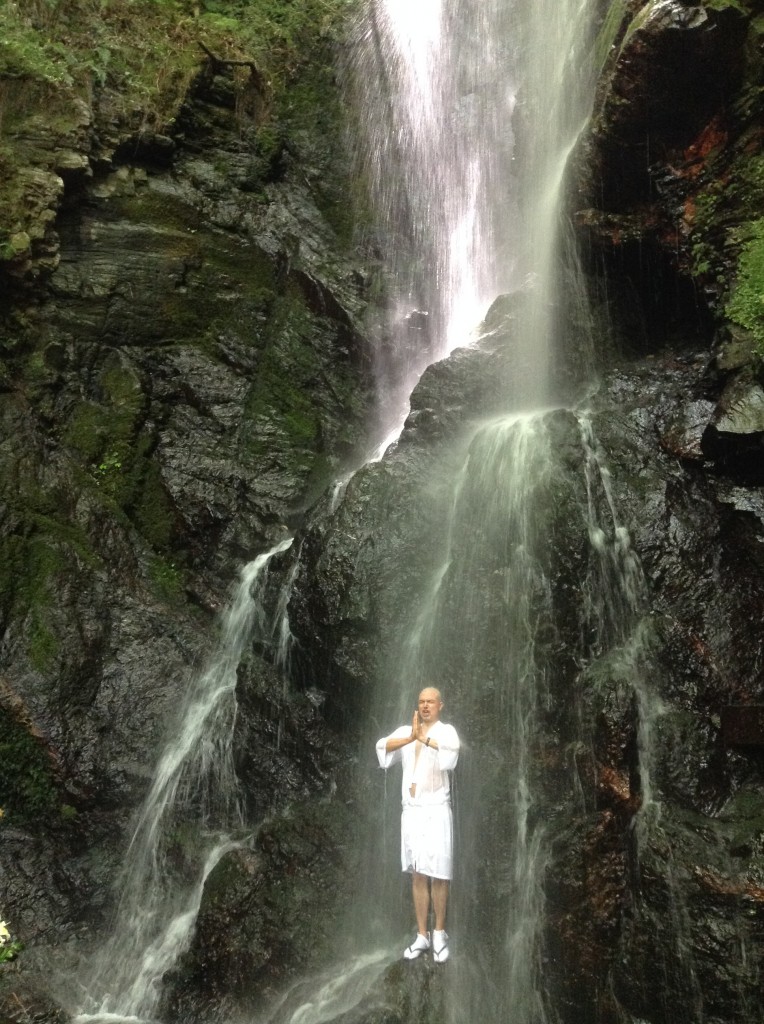
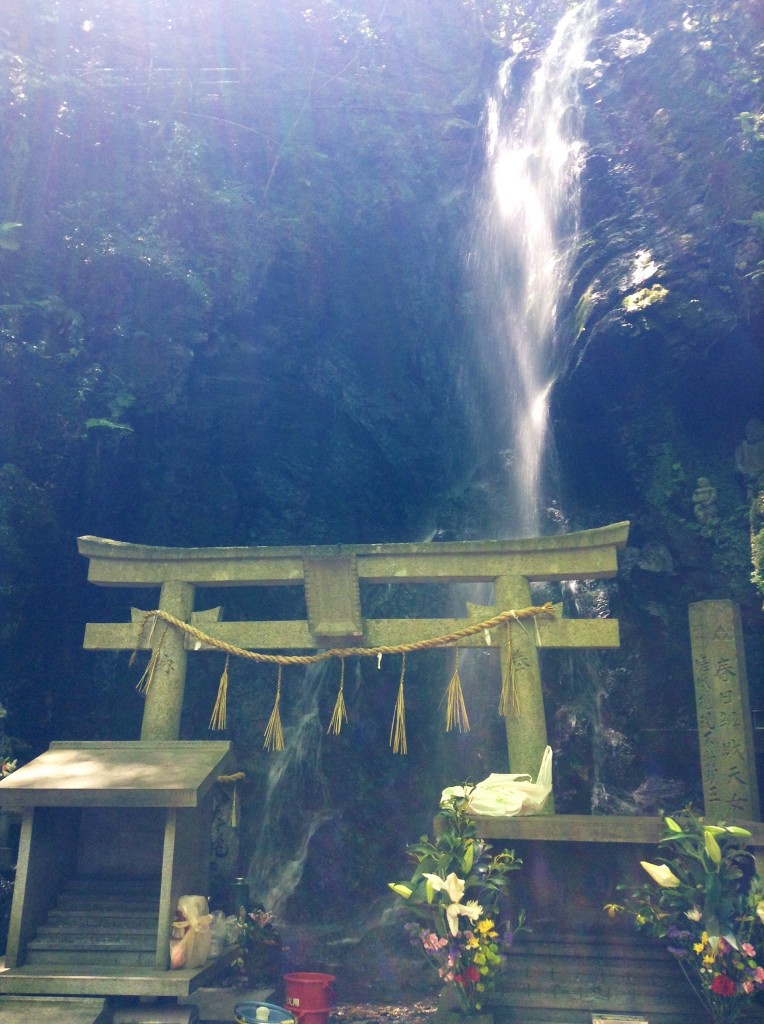
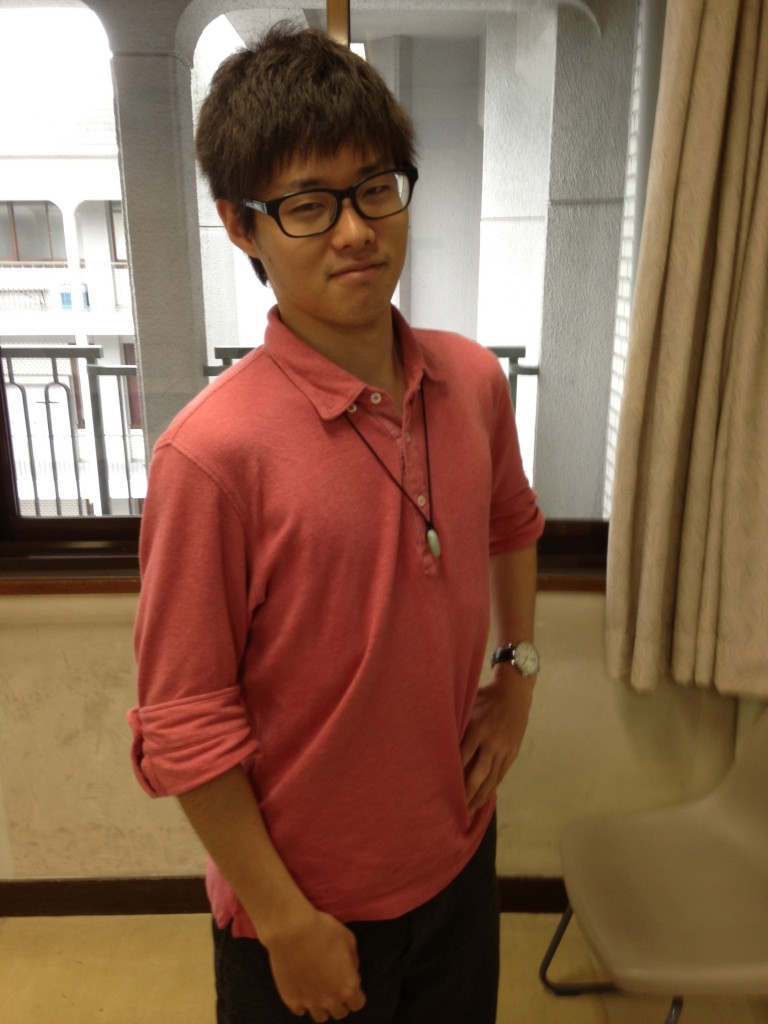 One of my students came to class wearing a magatama round his neck today. When I asked him where he’d got it from, to my surprise he told me he’d ordered it from amazon. (Click
One of my students came to class wearing a magatama round his neck today. When I asked him where he’d got it from, to my surprise he told me he’d ordered it from amazon. (Click 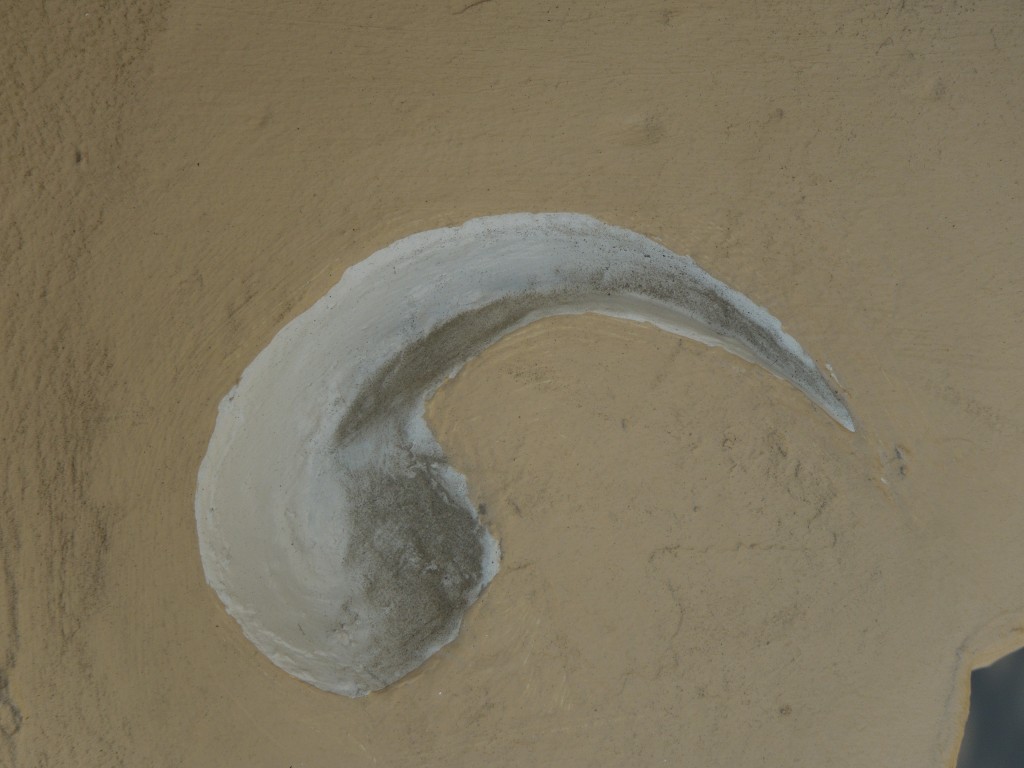 Not long afterwards the power spot boom took place, and there was a notable upturn in the number of young people visiting shrines. Many were young women, who flocked to ‘enmusubi’ shrines in search of good love connections, but there were also many who were motivated by a desire to learn more of history and the nation’s spiritual essence.
Not long afterwards the power spot boom took place, and there was a notable upturn in the number of young people visiting shrines. Many were young women, who flocked to ‘enmusubi’ shrines in search of good love connections, but there were also many who were motivated by a desire to learn more of history and the nation’s spiritual essence.